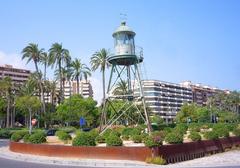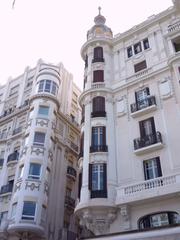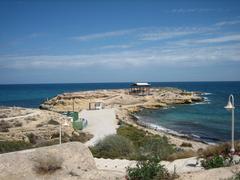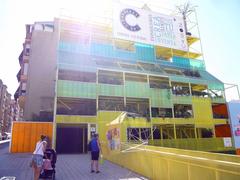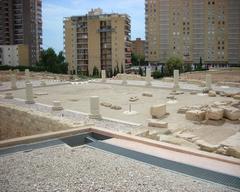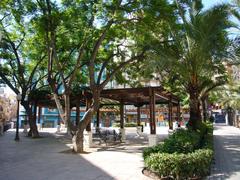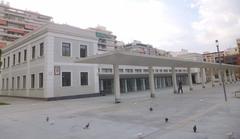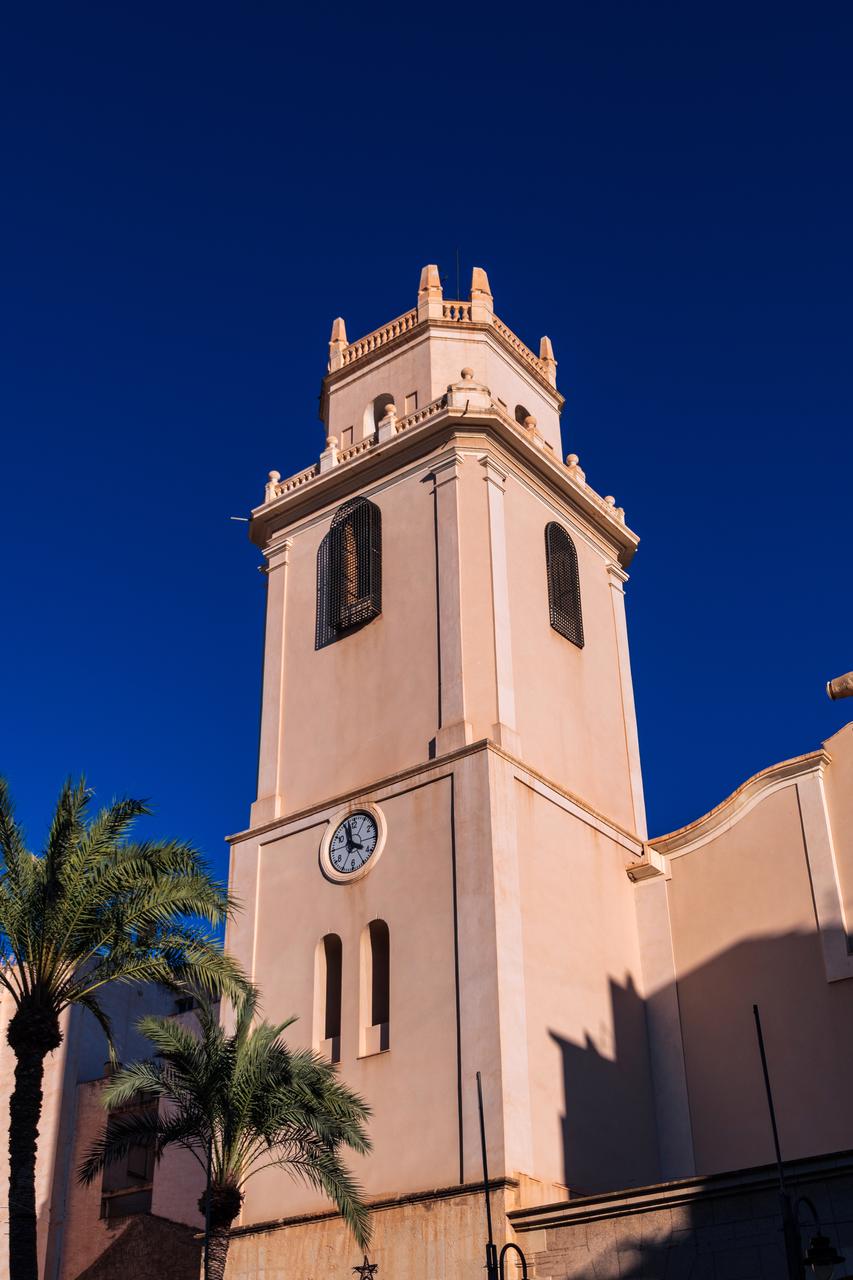
Comprehensive Guide to Visiting Alicante, Alacantí, Spain
Date: 14/08/2024
Captivating Introduction
Imagine a place where golden beaches meet ancient ruins, where the past and present intertwine in a sun-kissed Mediterranean paradise. Welcome to Alicante, Alacantí, Spain—a city that promises not just a vacation, but an adventure through time. Picture yourself standing atop the ancient Santa Bárbara Castle, feeling the cool breeze off the Mediterranean while gazing at panoramic views that have witnessed millennia of history. Alicante, or ‘Al-Laqant’ as it was known during its Moorish occupation, is a tapestry of cultures, each thread adding richness to its vibrant fabric (Alicante History). From the ancient Iberian settlement of ‘Akra Leuke’ to its role as a key port under Roman rule, this city has stories to tell.
But Alicante is not just about history; it’s a living, breathing city that pulses with modernity and charm. Whether you’re wandering through the narrow streets of El Barrio, savoring local delicacies like arroz a banda, or joining the electrifying Hogueras de San Juan festival, there’s always something to discover. So grab your sunhat, pack your sense of adventure, and let’s explore the hidden gems and local secrets of Alicante.
Table of Contents
Historical Overview
Ancient Origins
The earliest known settlers in the Alicante region were the Iberians, who established the settlement of “Akra Leuke” (White Summit) around 1000 BC. This settlement eventually evolved into what we now know as Alicante. Archaeological sites like the Tossal de Manises provide evidence of this ancient Iberian presence (Alicante History).
Roman Rule
During Roman times, Alicante became known as “Lucentum.” The Romans brought with them their culture and architecture, evident in structures like the Roman baths and the layout of the city. Lucentum served as a key port in the Roman province of Hispania (Alicante History). Visitors today can explore these ancient ruins, which offer a glimpse into the city’s Roman past.
Moorish Occupation
After the fall of the Western Roman Empire, Alicante fell under the rule of various Visigothic and Moorish dynasties. During the Moorish era, the city thrived as a center of trade and agriculture, with the city’s name evolving into “Al-Laqant.” The Moors left a lasting impact on the city’s architecture and culture, which can still be seen today (Alicante History).
Reconquista and Christian Rule
The Reconquista, a period of Christian reconquest, led to Alicante’s liberation from Moorish rule in the 13th century under King Alfonso X of Castile. The city was renamed Alicante, which is believed to have derived from the Arabic “al-laqant.” This period marked the beginning of significant Christian influence in the region (Alicante History).
Medieval Prosperity
Alicante flourished as a bustling Mediterranean port during the Middle Ages. It was a hub for trade, particularly with other European cities, and its strategic location made it a target for pirates. To defend against these threats, the Santa Bárbara Castle was constructed on Mount Benacantil, which still stands as a symbol of the city (Alicante History).
Modernisation and Growth
In the 18th century, Alicante saw economic growth driven by the export of local products, including wines, almonds, and olive oil. With ups and downs in the economy, the prosperity continued into the 19th century, marked by the construction of significant civic buildings and the famous Esplanade of Spain (Alicante History).
20th Century and Beyond
In the 20th century, Alicante experienced urban development and population growth, becoming a prominent tourist destination along the Costa Blanca. The Spanish Civil War had a significant impact on the city, with the port being a critical Republican stronghold during the conflict (Alicante History).
Contemporary Alicante
Today, Alicante is a thriving modern city that blends its historical heritage with a vibrant present. Visitors can explore the ancient Santa Bárbara Castle, wander through the charming Old Town, and relax on its stunning beaches. The city’s rich history is still visible in its architecture, festivals, and cultural traditions, making it a captivating destination for travelers seeking a deeper connection with Spain’s past (Contemporary Alicante).
Key Historical Sites
Santa Bárbara Castle
Perched atop Mount Benacantil, Santa Bárbara Castle offers panoramic views of Alicante and the Mediterranean Sea. The castle, of Arab origin, exhibits traces of all the civilizations that passed through the city, although much of the current construction belongs to the 16th century (Santa Bárbara Castle).
Lucentum Archaeological Site
The ruins of the ancient Roman city of Lucentum are located in the Tossal de Manises area. This site provides a fascinating glimpse into Alicante’s Roman past, with well-preserved remnants of Roman baths, streets, and houses (Lucentum).
The Old Town (El Barrio)
Alicante’s Old Town, known as El Barrio, is a maze of narrow streets and historic buildings. Highlights include the Gothic church of Santa María, built on an old Arab mosque, and the vibrant nightlife that the area is known for (El Barrio).
Cultural Heritage
Alicante’s cultural heritage is a blend of influences from the various civilizations that have settled in the region. This is reflected in the city’s festivals, such as the Bonfires of Saint John (Hogueras de San Juan), which celebrate the arrival of summer with fireworks, parades, and the burning of large wooden effigies (Cultural Heritage).
Visitor Tips
Best Time to Visit
Alicante enjoys a Mediterranean climate with mild winters and hot summers. The best time to visit is during the spring (April to June) or fall (September to November) when the weather is pleasant, and the city is less crowded (Weather).
Getting There
Alicante-Elche Airport is your gateway to this sunny paradise, just 9 kilometers from the city center. With direct flights from major European cities, you’ll be soaking up the Spanish sun in no time. From the airport, hop on a bus, grab a taxi, or rent a car to start your adventure (VisitCostaBlancaSpain).
Transportation
Alicante has a good public transport system, including buses and the TRAM, which connects the city to nearby destinations along the Costa Blanca. The city is also pedestrian-friendly, with many attractions within walking distance (Transport).
Accommodation
Alicante offers a range of accommodation options, from luxury hotels to budget-friendly hostels. It is advisable to book in advance, especially during peak tourist seasons (Accommodation).
Key Attractions
Santa Bárbara Castle: The Sentinel of Alicante
Climb up Mount Benacantil to Santa Bárbara Castle and soak in breathtaking views of the city and the Mediterranean. Accessible by foot, car, or an elevator from Postiguet Beach, this fortress is a history lover’s dream (Audiala).
Explanada de España: Stroll with Style
Saunter along this iconic promenade, flanked by waving palms and vibrant mosaics. It’s a feast for the eyes and a favorite hangout for locals and visitors alike (Nomads-Travel-Guide).
Playa del Postiguet: Sun, Sea, and Sand
A stone’s throw from the city center, Playa del Postiguet beckons with golden sands and azure waters. Enjoy sunbathing, swimming, and beachside dining (VisitCostaBlancaSpain).
Cultural Experiences
Mercado Central: A Feast for the Senses
Wander through Mercado Central, where the air is thick with the aroma of fresh produce, seafood, and local delicacies. It’s a foodie’s paradise and a window into local life (Travel-Lingual).
Festivals: Join the Fiesta
Don’t miss the electrifying Las Hogueras de San Juan in June, featuring towering bonfires, dazzling fireworks, and lively parades. It’s a cultural immersion like no other (AdventureInYou).
Dining and Nightlife
For a culinary delight, head to Dársena Restaurante for exquisite seafood. When the sun sets, Alicante’s nightlife springs to life. Dance the night away at hotspots like Pacha Alicante (Travel-Lingual).
Practical Tips
Language
Spanish is the lingo, but English is common in tourist areas. Brush up on basic Spanish phrases for a richer experience.
Currency
The Euro (€) reigns here. Cards are widely accepted, but having cash is handy for small buys.
Safety
Alicante is generally safe, but stay vigilant. Watch your belongings and avoid dimly lit areas at night. Mind pickpockets in busy spots (Travel-Lingual).
Health and Travel Insurance
Travel insurance is a must. EU citizens can use their EHIC, but extra coverage is recommended for comprehensive protection (ComeAmaviaja).
What to Pack
- Swimsuit and Beach Towel: For beach escapades.
- Comfortable Walking Shoes: Perfect for exploring.
- Sunscreen and Hat: Protect against the strong sun.
- Camera: Capture every moment.
- Travel Adapter: Keep your gadgets charged.
- Lightweight Clothing: Stay cool and comfy.
- Cash or Credit Card: For all your expenses (Travel-Lingual).
Avoiding Tourist Traps
Skip the crowded spots during peak seasons and discover hidden gems. Wander off the beaten path to experience Alicante’s true charm. Be cautious of overpriced eateries and shops in touristy areas (ComeAmaviaja).
Top Attractions
Castle of Santa Bárbara
Imagine standing atop a fortress with a view that stretches to the horizon, where the Mediterranean kisses the sky. Welcome to the Castle of Santa Bárbara, an ancient sentinel perched on Mount Benacantil since the 9th century. Wander through its storied dungeons and age-old cannons, and don’t miss the Museum of the City of Alicante (MUSA) for a deep dive into local history. Climb La Torreta, the castle’s oldest tower, to feel centuries of history beneath your feet and the city’s pulse below.
Explanada de España
Take a leisurely stroll down the Explanada de España, a promenade famed for its hypnotic mosaic of 6.5 million marble tiles. With palm trees swaying overhead and street performers providing a lively soundtrack, it’s a sensory feast. Grab a café con leche from a nearby cafe and watch as the marina’s boats bob gently on the waves. It’s the perfect spot for people-watching and soaking in the local vibe.
San Juan Beach
Picture yourself on San Juan Beach, where golden sands stretch as far as the eye can see. This beach is a paradise for sun-seekers and thrill-seekers alike, offering everything from serene sunbathing to exhilarating water sports. With bars and restaurants just a stone’s throw away, you can savor fresh seafood with the sea breeze in your hair.
Tabarca Island
Hop on a boat to Tabarca Island, a former pirate haven turned marine reserve. This little island is a treasure trove of history and natural beauty. Wander its quaint streets, explore the old fort and lighthouse, and dive into crystal-clear waters teeming with marine life. Don’t leave without tasting the island’s legendary seafood paella.
Basilica of Santa Maria
Step back in time at the Basilica of Santa Maria, Alicante’s oldest church built in 1384. Marvel at its Catalan Gothic architecture, intricate façade, and stunning altarpieces inside. Climb the bell tower for a panoramic view of the city that’s worth every step.
Contemporary Art Museum (MACA)
For a dose of culture, head to the Contemporary Art Museum of Alicante (MACA). Housed in a historic building, MACA showcases masterpieces by Picasso, Dalí, and Miró. The museum’s dynamic exhibits and workshops are a magnet for art enthusiasts of all ages.
Playa del Postiguet
Nestled at the foot of Santa Bárbara Castle, Playa del Postiguet is an urban oasis. Its fine sands and gentle waves make it a family favorite. The beach’s central location offers easy access to nearby attractions, making it perfect for a spontaneous beach day.
Mercado Central
Dive into the heart of Alicante at the Mercado Central. This bustling market, set in a beautiful early 20th-century building, is a culinary playground. Sample local delights like turron and arroz a banda, and immerse yourself in the vibrant local culture.
Alicante Tram
The Alicante Tram offers more than just a ride; it’s a scenic tour through the Costa Blanca. Connecting Alicante with charming coastal towns, a tram journey unveils breathtaking landscapes from mountains to beaches. For the ultimate adventure, take the tram-train to Benidorm or the diesel train to Dénia.
Hogueras de San Juan
Join the fiery celebration of Hogueras de San Juan from June 19 to 24. This festival heralds the start of summer with bonfires, parades, and fireworks. Marvel at the intricate wooden and papier-mâché sculptures set ablaze in a grand spectacle. This is Alicante at its most vibrant and festive.
Port of Alicante
The Port of Alicante is a historical and cultural hub. Once a lifeline during the Spanish Civil War, it’s now a bustling cruise port. Enjoy waterfront dining, visit cultural sites, and learn about heroic tales like that of the SS Stanbrook in 1939.
Practical Tips for Visitors
- Getting Around: The Alicante Tram is your scenic ticket to explore the city and beyond. It’s a journey worth taking for the views alone.
- Accommodation: Secure your stay early, especially during peak seasons and festivals, to avoid disappointment.
- Local Cuisine: Don’t miss out on culinary delights like turron, fresh seafood, and arroz a banda. The Mercado Central is a must-visit for foodies.
- Festivals: Alicante’s festival calendar is packed with events like the Hogueras de San Juan, offering a cultural feast of parades, parties, and fireworks.
By uncovering these top attractions and following our insider tips, you’re sure to create unforgettable memories in Alicante, Alacantí, Spain.
Call to Action
As the sun sets over the Mediterranean, casting a golden hue over the historic streets and modern promenades, it’s clear why Alicante is a must-visit destination. This city is a living museum, a culinary heaven, and a vibrant cultural hub wrapped into one. From the ancient ruins of Lucentum to the bustling Mercado Central, every corner of Alicante holds a story waiting to be discovered. Whether you’re scaling the heights of Santa Bárbara Castle for a bird’s-eye view of the city or diving into the azure waters of San Juan Beach, Alicante offers experiences that engage all the senses.
But beyond its stunning sights and delectable cuisine, what truly sets Alicante apart is its soul—the warm, welcoming spirit of its people and the rich tapestry of its history. So why just read about it? Download Audiala and let us be your guide through the enchanting streets, lively festivals, and serene beaches of Alicante. With Audiala, you’ll uncover the hidden gems and local legends that make this city unforgettable. Your journey through the sun-kissed gem of Spain awaits. Ready to explore?
References
- Alicante History, 2024, Alicante.com Alicante History
- Santa Bárbara Castle, 2024, Spain.info Santa Bárbara Castle
- Is Alicante Worth Visiting?, 2024, AlicanteAbout.com Lucentum
- Inside Guide: Alicante, Spain’s Underrated Coastal City, 2024, National Geographic El Barrio
- Historical Weather during 2024 in Alicante, Spain, Weatherspark Weather
- Things to Know: Is Alicante Worth Visiting?, Travel-Lingual Transport
- Alicante Travel Guide, 2024, VisitCostaBlancaSpain Accommodation
- Inside Guide: Alicante, Spain’s Underrated Coastal City, 2024, National Geographic Cuisine
- Alicante Travel Tips, 2024, TravelTomTom TravelTomTom
- Things to Do in Alicante, Travel-Lingual Travel-Lingual
- Best Alicante Top Attractions and Hidden Gems, 2024, Alicante.com San Juan Beach
- Hogueras de Alicante, Wikipedia Hogueras de San Juan
- Alicante, Wikipedia Alicante
- Things to Do in Alicante, ComeAmaviaja ComeAmaviaja
- Adventure In You, 2024, AdventureInYou AdventureInYou

